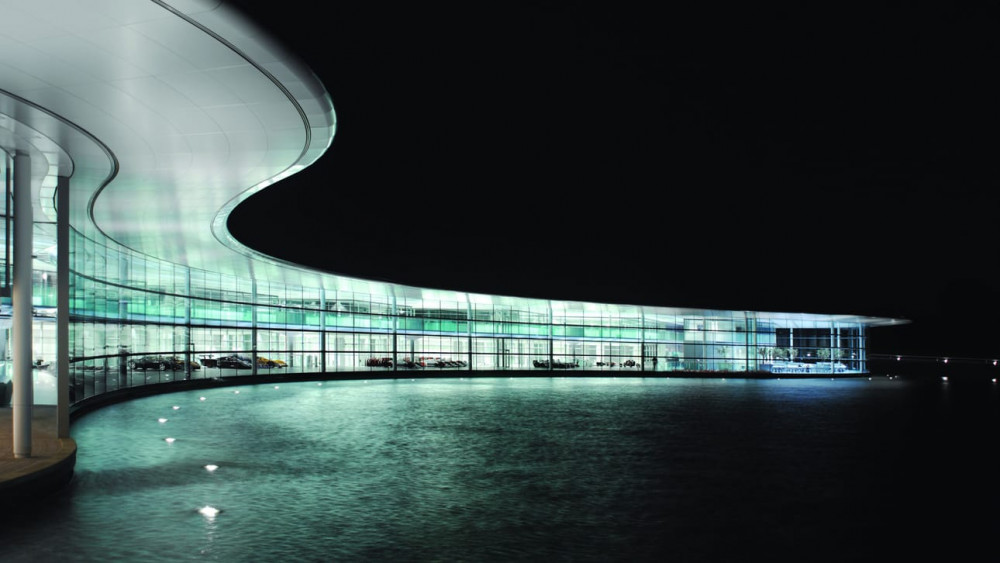For many young Engineers, working in Formula 1 is the ultimate dream. But how do you actually make that happen?
Julien Simon-Chautemps, former race engineer to Kimi Räikkönen, shares his insights on breaking into the high-octane world of motorsport.
Igniting the Passion
Like most people in F1, Simon-Chautemps' journey began with that childhood spark.
"I was eight years old and my dad brought me to the Monaco Grand Prix," he recalls. That early exposure to the sights, sounds, and smells of F1 planted a seed that would grow into a lifelong passion."
Educational Foundations
While passion is obviously crucial, it needs to be backed by a solid interest in technical knowledge and a first class education. Simon-Chautemps studied at a specialised engineering school in Paris, focusing on aerodynamics and aerospace.
"The first two years are purely math, physics, science," he explains. "Then the last three years, that's when you start to specialise."
For aspiring engineers today, degrees in mechanical engineering, aerodynamics, or automotive engineering are highly valued in the Motorsport industry.
Many universities now offer specific motorsport engineering programmes, which can provide a targeted pathway into the field.
The Internship Imperative
Perhaps Simon-Chautemps' most emphatic advice is the importance of internships.
"If I have one big recommendation to students now, it's to look for internships," he stresses.
These practical experiences not only build skills but also help develop industry connections. Networking is very much part of the challenge.
Simon-Chautemps completed multiple internships, including stints in the USA and with Formula Nissan in Spain. This diverse experience set him apart when applying for his first full-time role. This is such an importan tpart of developing a career in Motorsport that we'll be covering networking and getting internships on our blog. University courses cover this as a topic too!
Starting from the Bottom
Landing that first job often means being willing to start at the very bottom.
"My first job was to clean the wheels of the truck,"
Simon-Chautemps admits. This humbling start taught him valuable lessons about the industry and the importance of every single role within a racing team.

Resilience and Persistence
The path to F1 is rarely smooth. Simon-Chautemps emphasises the need for resilience, recounting how he "kept pestering people" he knew, constantly writing and calling to ask for opportunities. This persistence eventually paid off, leading to his break with Toyota's then F1 team.
Continuous Learning and Adaptability
Motorsport technology evolves rapidly, and engineers must keep pace. Simon-Chautemps' career saw him adapt to new roles and technologies, from working with Formula Renault 2.0 cars at Prema to dealing with complex hybrid power units in F1.
Networking and Preparation
Building and maintaining professional relationships is crucial.
When opportunities arise, being thoroughly prepared can make all the difference.
Simon-Chautemps recalls arriving at an interview with "a PowerPoint presentation of the job I was doing," (remembering, of course that this was probably quite an unusual thing to come prepared with at the time).
The Long Game
Perhaps most importantly, Simon-Chautemps stresses the need for patience. It took him about 10 years from his first job to becoming a race engineer in F1.
"That's an important lesson for people thinking 'oh I'm going to go straight into Formula One'," he notes.

Passion as Fuel
Given the long hours and high pressure, passion is what ultimately sustains a career in motorsport. "You could not do this job if you're not passionate about what you're doing," Simon-Chautemps asserts.
For those dreaming of a career in motorsport, Simon-Chautemps' journey offers a realistic yet inspiring roadmap. It's a path that demands dedication, resilience, and a willingness to start small and work tirelessly. But for those with the passion and perseverance, the rewards - like engineering for a world champion - can be extraordinary.

Career History:
Julien Simon-Chautemps boasts a remarkable career in motorsport spanning over two decades. His journey includes:
- A 14-year stint in Formula 1, culminating as Kimi Räikkönen's final Race Engineer in the sport.
- Experience as Race Engineer for a roster of talented drivers including Marcus Ericsson, Romain Grosjean, Jolyon Palmer, Pastor Maldonado, Vitaly Petrov, and Jarno Trulli.
- Seven years honing his skills across various championships, from European series like Formula Renault 2.0, Formula 3, and GP2, to international competitions such as FranAm in North America and V8 Supercars in Australia.
- A wealth of experience working with both seasoned professionals and promising young talents.
- Expertise across multiple levels of motorsport, from the pinnacle of F1 to developmental series like F2, F3, Formula Renault, and GT racing.
- A track record of success, with victories in F1, GP2, F3, Formula Renault 2.0, and GT categories.
- Associations with prestigious teams including Toyota F1, Lotus Racing, Renault Sport, Sauber, Prema, Trident, and Stone Brothers Racing.
- Continuous professional development through various training programmes in Leadership, Team Management, Problem Solving, Resilience, and Belbin Team Roles.
- A solid educational foundation with a degree in Aerospace and Aeronautical Engineering from IPSA in Paris, graduated in 2002.
- Multilingual capabilities, being fluent in English, French, and Italian, with conversational Spanish skills.
All images credit: https://jsc7engineering.com/gallery





